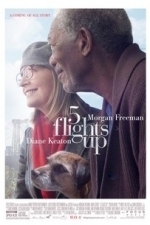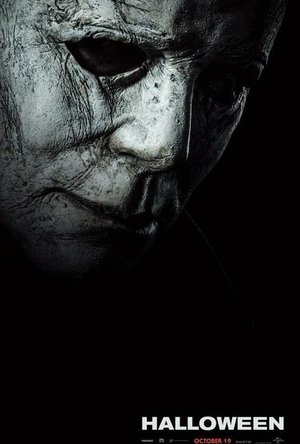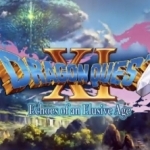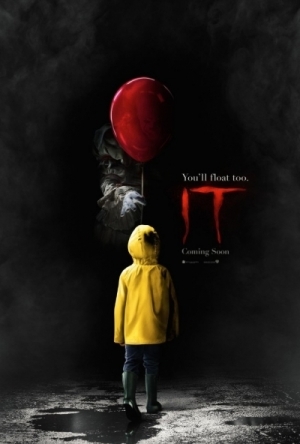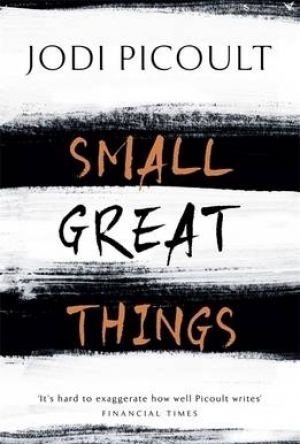Darren (1599 KP) rated 5 Flights Up (2015) in Movies
Jun 20, 2019
The couple have to deal with the idea that Dorothy needs major surgery to fix a ruptured disc in her back, this means that Alex has to go along with selling the apartment to help fund the operation. The attempts to sell the apartment get put in jeopardy when a terrorist attack happens on the Williamsburg Bridge where a tanker gets abandoned on the bridge and the suspect flees.
The first interested parties turn up before the open house where Alex & Ruth get to meet a collection on colourful characters that all have different opinions on the apartment. Alex & Ruth decide to try and find their own replacement apartment as they continue to battle the idea of trying to pick who to sell the apartment too.couple
5 Flights Up tells such a simple story of a couple trying to move apartments, while dealing with their sick dog. This is putting everything down to the simplest way, the flashbacks show how in love the couple have been through the years but for the most part the film takes place over a couple of days. I will say not everyone will find this appealing and I do think the light hearted comedy makes the film a lot more enjoyable. The performances are all important and the character our couple meet add to the story. This will go under many people’s radar but it is well worth a watch. (7/10)
Actor Review
Morgan Freeman: Alex is our elderly man reluctantly selling his apartment with his wife. We watch how the relationship has blossomed over the years and the love for their dog helped keep them happy. Morgan gives us a charming performance that shows he age without taking away any of his acting credentials. (7/10)
Diane Keaton: Ruth is Alex’s wife who is willing to sell their apartment and falls for another apartment, she tries to convince Alex into buy the new apartment as they both continue to want to buy the new apartment alone. Diane does give a good performance showing she still has what it takes to lead a film. (7/10)
Support Cast: 5 Flights Up has a supporting cast that each have their own colourful take on the situation as we see Alex & Ruth react to them all.
Director Review: Richard Loncraine – Richard gives us a charming drama that keeps our attention from start to finish. (7/10)
Drama: 5 Flights Up puts us into a very real situation off an elderly couple considering moving but as the story unfolds we see how difficult it is to make that decision. (8/10)
Settings: 5 Flights Up keeps the settings easy to identify and gives them all a very homely feel to our couple. (9/10)
Suggestion: 5 Flights Up is one to try I do believe it will be enjoyed but there is part of me that thinks some people will not enjoy this one too much. (Try It)
Best Part: Open house.
Worst Part: The characters the couple meet are slightly generic.
Believability: The moving idea is a very real idea that people will find themselves in and the indecision about it too. (8/10)
Chances of Tears: No (0/10)
Chances of Sequel: No
Post Credits Scene: No
Oscar Chances: Unlikely
Runtime: 1 Hour 32 Minutes
Tagline: A coming of age story
Overall: Charmingly enjoyable film about life and the difficulties with change.
https://moviesreview101.com/2015/05/18/5-flights-up-2015/

Bill & Hillary : So This Is That Thing Called Love
Darwin Porter and Danforth Prince
Book
On the campus of Yale University, in 1970, an "odd couple," Hillary Rodham and Bill ("Bubba")...
Piper (13 KP) rated Halloween (2018) in Movies
Nov 27, 2019
The plot is predictable, because of course it is. It’s Michael Myers, what’s he going to do except escape from a mental institution and murder some people? But it’s beautifully subverted; some of the characters you might expect to last till the end die before the halfway mark, and while there are a fair amount who are clearly written in just to be killed minutes later, they contribute to some fine, gory moments, so it’s kind of okay. There’s no real heartbreaker here - everyone you really rooted for just about makes it, and everyone that was kind of a dick is killed. And that’s fine, because in a way this isn’t the kind of slasher where it matters who lives or dies. This is a film about preserving a legacy, or perhaps just making one, and it works. We’re told fairly early on that this is a direct sequel to the original Halloween (Myers’ death toll at the start of this version, apparently, is five, which matches the amount of kills he made in the first movie - as far as I’m aware, Myers has actually killed over 100 people in all the films combined, so this is a nice subtle way of telling us what to remember and what to ignore completely). Having said that, references are made throughout to previous films, the best of which is of course a callback to the infamous scene where Myers tumbles out of a window only for his body to completely disappear - this time it’s Laurie Strode who does the tumbling, and she very much intends to do a little vanishing act of her own, Michael, so keep an eye on - oh, no, you looked away, I wonder what’s happening down there!
Focusing on Laurie for a moment, Jamie Lee Curtis does an absolutely excellent job here. Age has given her character wisdom, paranoia, and a whole lot of guns, and the acting carries a huge amount of weight and strength with it. Having said that, there are a couple of moments where all of Laurie’s fear-induced calculations don’t seem to have quite worked out - why bother going to such extreme measures to protect your house, if the front door you’re standing behind is half glass? But that’s the thing about this movie - whatever you plan for, whatever you think Michael Myers is capable of, he’s stronger than you think, he’s far more terrifying than you remember, and right until the end, he’s here to remind you that nothing you can plan for will ever be enough. Of course, we never actually see him die (again) so here’s looking forward to the next sequel…
The cinematography is something to at least wonder over - settings and locations are used well and established with some wonderful wide shots, and some of the best scenes are those where the camera just stays in one place, at a very carefully-selected window for example, and watches. Two scenes are worth a particular mention; the first, in which we follow our two podcast-host characters to a gas station, seems fairly dull until Myers catches up to them, but if you watch the background carefully enough you’ll see he’s there all along, beating people up and murdering quite happily (swapping his prison jumpsuit for those traditional blues in the process). The second seems a little superficial, in the grand scheme of the movie, but it’s well-shot nonetheless - we watch, from that aforementioned window, as a woman hears about all the nasty things Michael might do, and of course we can see him through another window, heading for her front door, and when he finally appears inside the house he’s all the way across the room, somehow, and he calmly wanders on over and stabs the woman quite coolly through the throat, in a scene which I think is most reminiscent of the original films.
However, there are moments when you don’t see Michael at all, just the aftermath, or where we watch him enter a room and are forced to linger in the corridor while he does the dirty work. A couple of times that’s just fine, but considering the nature of the film it would be nice to watch the magic happen a couple more times. And while we’re on the negatives, I might mention that the reveal that the Doctor Loomis-type character who looked, felt, and sounded like a rip-off of Doctor Loomis, and was even referred to as “The New Doctor Loomis” did EXACTLY the same thing that Doctor Loomis did, surprise, and we were somehow expected to not see that coming like it was all one big, obvious, heavy-handed bluff. A couple of the other characters, too, felt like they were purely rammed in there to be irritating - there were a couple of strong scenes with our podcast hosts, but ultimately they were rude, on-the-nose and annoyingly egotistical, and I was happy to see them go, just like Alison’s friend Foggy Nelson.
The score, incidentally, is worth mentioning, from a haunting retune of the original Myers theme to darker and more dramatic variations on it later on that really would have been quite something to hear in surround-sound. I’m never usually one to appreciate the music of a film quite fully enough, so it was nice to have this grab my attention in quite the way it did. Overall, it’s a genuinely good follow-on that takes the best of the films before and makes the best use of the worst of them. Some of the characters might be a little annoying, some of the action could have translated better on-screen than off, but it was an honest and straight-up slasher film and it just wasn’t that bad at all.
Mothergamer (1514 KP) rated Dragon Quest XI: Echoes of an Elusive Age in Video Games
Apr 3, 2019
Once the initial introduction is done, this is where Dragon Quest really gets going. You have a few side quests that give you a tutorial on how the battle system works and there is a small bit of exploration in the hero's home village.
The hero exploring a cave in his village.
Exploration is very much encouraged in Dragon Quest without being overwhelming. Dungeons are fairly linear so there's no confusion about where to go. The battle system has been revamped a bit with the ability to have the AI on your party members set to specific things such as focusing on healing or fighting wisely. The way I had mine set up was that I had control of the hero with the follow orders setting and had the party members set to certain AI controls like having designated healers and melee fighters.
Another part of fighting in these turn based battles is something called pep powers. Basically after party members take a certain amount of damage from enemies they gain the power of pep. Each pep power is different and you unlock more for your hero and party members as you level up. These pep powers allow the hero and his friends to team up during battles to unleash epic attacks or heal everyone depending on what the situation calls for. Pep powers do not last forever however and if you don't use them right away they can wear off. A trick around this is to have the party member who is pepped up swap places with a party member who isn't. This is where the tactics and line up option in the battle menu comes in handy. It allows you to swap members in and out as needed until everyone has their pep powers ready to go.
Use the pep powers to defeat enemies in battle.
There are tons of side quests in Dragon Quest where you help villagers find items, defeat monsters for them, or just wear the right outfit and you get rewarded with not just experience but items for crafting, healing items, or gear for your party members. There are also some mini games like horse racing and a casino where you can exchange tokens for things like costumes and crafting recipes.
Horse racing is just one of the mini games you can play in the game.
Crafting is a big part of Dragon Quest XI. When you are at campfires, you can use the fun sized forge to craft weapons, armor, and accessories for your hero and his friends. I enjoyed this part of the game a lot because there are a variety of items you can make and if you make them well you get some pretty good stats on them. As you level up, you unlock abilities that can enhance your forging skills and increase your chances of successfully crafting items. If you screw up a crafting session you can always go back and rework the item if you have the right number of perfectionist's pearls. Some of the side quests require you to craft specific items so this is where the fun sized forge comes in handy. It's a nice break from level grinding and adventuring and you can save your game progress at the campfire as well.
Craft a variety of items with the fun sized forge.
Another fun aspect of the game is the variety of costumes you can get for your hero and party members. Some do offer pretty great defense stats and some are just for fun like Jade's bunny costume. There are a few side quests that offer costumes as rewards and some of the costumes you can craft with the forge. Running around getting all the costumes is a lot of fun and each one looks great and goes well with the party member it's for.
Just one of the many costumes you can get in the game.
Does Dragon Quest XI have flaws? In a word, yes. While I loved running around exploring everywhere, enjoyed the story, and didn't mind the level grinding there are serious issues with many of the boss battles in the game. My biggest one is that the old fashioned way of not being able to see a boss battle's HP bar does not work. There are times where a battle will drag on a little too long and there is no way to tell if you are even doing any damage at all or if the boss is close to being defeated. Fighting and hoping for the best just does not work.
Another factor is just how much level grinding is needed in order to win against certain bosses. I love Dragon Quest and while I don't mind challenging having to run around for long periods of time to level grind just to win a boss fight is incredibly tedious which brings me to the next major issue with the game. Towards the end of the game there is a final boss that is the biggest pain in the ass to fight. To add to the frustration in this final area there is only one save point and it's at the beginning of the dungeon. There is no warning about the final boss coming up, no save point before it, and it just throws you into the fray. I did not win the first time or even the second because the boss fight was in two parts and the second part had an outrageous difficulty spike to the point of being so frustrating that I had to take a break from the game.
I did finish the game eventually, but that part of the game alone and the odd spikes in difficulty in various boss fights shows that Dragon Quest needs to modernize a bit and get with the times. It does not need to do anything drastic, but it at least needs to make some changes that are more friendly to the people playing their game such as showing an enemy's HP gauge and not have such a steep learning curve for important boss battles.
Other than those things, I enjoyed Dragon Quest XI a lot. It has an interesting story, wonderful characters, and is a great adventure overall. There is a lot to see and do, the mini games are fun, and the voice acting in the game is very well done. The artwork in the game is terrific and you definitely notice Akira Toriyama's unique art style. The music for the game is great also. When you finish the game, there are things you can do afterwards such as collecting all the crafting recipes and finishing some level 60 side quests. If you are a fan of the series, it is one that you will enjoy playing because it is a great addition to the Dragon Quest universe.

Moon Gardening
Weather and Productivity
App
Can gardening by the Moon affect plants in your garden? This app will give you specific gardening...

Moon Gardening Light - Grow Plants Better With Moon Phases
Weather and Productivity
App
Can gardening by the Moon affect plants in your garden? This app will give you specific gardening...
Daniel Boyd (1066 KP) rated It (2017) in Movies
Oct 4, 2017
Let’s go through what I liked first of all. The movie opens with the tragic and brutal death of Georgie Denborough. Just like the book, he follows his paper sailboat down a storm drain, where he first encounters IT. This first appearance of Bill Skarsgard as Pennywise sets the tone for the rest of the movie, unflinching and horrifying. I felt that this intro was extremely effective in setting up what the audience could expect from this adaption, both tonally and visually.
I thought that the child actors in the movie where phenomenal, much better than I had anticipated. They all do a great job with the material they are given and each manage to bring some range to their roles. I liked the visuals for the most part and appreciated the use of mostly practical effects, my highlights being the headless burning boy in the library and when Pennywise’s entire head opens up to consume Beverly.
I enjoyed the fact that the movie served as both a coming of age story and as a horror movie. Stranger Things was clearly inspired by the original IT and this version is clearly inspired by Stanger Things, which was nice to see as a fan of both series. I liked how the movie was about kids, but dealt with adult themes in a mature manner. I also admire how the movie worked in a fair amount of comedic moments whilst still remaining frightening. Another thing that I appreciated was the few moments of subtle creepyness that the film sprinkled throughout, such as the kids TV show that was heard in the background talking about how ‘you should dance along with the clown,’ and encouraging you to be violent etc, I thought that this was a really nice touch. Also, during the library scene where Ben is flipping through the history book, I think IT took the form of the librarian, as the librarian is really creepily staring at Ben from the background of the scene, which really freaked me out when I noticed it. I also liked how some of the jumpscares worked, but unfortunately not all of them did.
Now onto what I didn’t like; my biggest issue with this movie is how formulaic it ends up feeling by around the halfway mark. With each new member of the losers club we are introduced to, we find out what the kid is scared of, then IT appears to them as the aforementioned fear, then we get a jumpscare and the scene cuts away, the next kid is introduced and the same thing happens again. This occurs repeatedly about eight times and by the fifth or sixth time it isn’t scary any longer. The worst thing that a horror movie can be is to become predictable and I’m sorry to say that this is what happens here. It ends up feeling like a checklist:
1. A child is introduced into the movie. Check
2. Some exposition is given for why they are scared of a certain thing. Check
3. IT takes the form of said fear and scares the kid. Check
4. Jumpscare happens and we abruptly cut to the next scene. Check
5. Rinse and repeat.
Some of the jumpscares do work though. Although the jumpscare during the projector screen was very obviously telegraphed, the fact that Pennywise was so huge in that scene took me by surprise, which was a nice touch. Also the scene I mentioned earlier with the headless boy in the library was well structured in the sense that once the boy was chasing Ben through the library you thought you had seen the scare, but when Pennywise leapt out from nowhere it was a genuine surprise.
The sound design is another element of the movie that I had a love/hate relationship with. For me, good sound design is essential to any worthwhile horror movie. I thought that the score used in the film was fantastic; the varied pieces perfectly complemented the tone of each scene they were used in. I also thought that some of the sound effects were well implemented in places. At other points though, the audio just annoyed me. The most egregious example of this was after Beverly smacked her dad across the head and IT appears behind her and grabs her. The sound that occurs here is ear piercingly loud, to the point that it was uncomfortable. It’s not scary, it’s not enjoyable, it’s just obnoxiously loud. It also comes across as lazy; it’s as if in post production someone decided that that scene wasn’t scary enough, so as a quick fix they just put in a painfully loud noise.
Another technical element that bothered me in places was the lighting. Don’t get me wrong, I enjoyed how a lot of the scenes took place in broad daylight, meaning we could see IT in all of his terrifying glory and in some scenes the lack of lighting added a sense of dread and helped with the film’s tone, but at times it obscured what was going on and shrouded too much of the environment and characters in darkness, to the point where you were having to squint to see what was going on.
Overall, this is a decent adaption. Bill Skarsgard does a fantastic job as Pennywise, the actors playing the kids are all great and the movie does have some effective scares. I was just taken out of it too many times though, due to the predictable nature of the repeated jumpscare sequences and some really poorly implemented technical elements.

Heroes Arena™
Games
App
Lag Free Global 5v5 mobile game. Fast, Fair and Fun! Fight for Glory! HEROES ARENA is the newest...
Hazel (1853 KP) rated Small Great Things in Books
May 24, 2017
The gist of the storyline is that a baby dies whilst under the care of a nurse, prompting the grieving parents to take her to court with the accusation of murder. Although that sounds like an interesting story, it barely begins to describe what the book is about. The character on trial, Ruth, is an African American labour and delivery nurse – something that in this day and age need not by an issue. On the other hand, the parents of the baby are White Supremacists: seriously racist with the belief that white people are the master race. The father, Turk, refuses to let his wife and child be treated by Ruth, however circumstances result in her being the only nurse available to watch Davis, when, unfortunately, he so happens to go into cardiac arrest. Although the reader knows that Ruth is not at fault, Turk insists she murdered his child – but is he accusing her of medical negligence, or punishing her for being black?
Three characters, all with different views and experience when it comes to racism, alternately narrate Small Great Things. Ruth and Turk represent the extremes at either side of the scale. Ruth experiences first hand the negative impact of prejudice in the American system and society, not only through this court case, but in everyday life as well. She also reveals the difficulties growing up in a predominately white environment, never feeling like she fitted in with her peers. Alternatively, Turk spent his teenage years attending KKK rallies, participating in a white power movement, and beating up anyone who was different: black, foreign, gay, Jewish and so forth.
The third character represents the majority of white people living in America. Kennedy is a public defender and the lawyer assigned to Ruth’s case. Like most of the population, she believes that she is not racist, and persuades Ruth to leave the colour of her skin out of the argument. However, as she gets to know her client, she begins to realize that it is nigh on impossible to ignore racial prejudice.
Picoult shocks the reader on two accounts: one, the way that people of colour have been, and still are, treated; and two, the revelation that an invisible empire of White Supremacists are living amongst us. Yet there is a third way in which Picoult provokes outrage – she indirectly accuses the reader of being racist, too.
There is always something to learn in a Jodi Picoult novel, for instance medical terminology, or the way in which a court trial is conducted. Small Great Things provides a lot more eye opening information than any of her previous books, unveiling facts about such a controversial subject.
Through Kennedy, the reader’s eyes are opened to the racial discrimination that we all turn a blind eye to. Ignored are the difficulties African Americans suffer when going shopping, applying for jobs, attending school, walking down the street, sitting on a bus, and so forth. Picoult asks me as a reader to think about how my life has been affected by racial discrimination: being served politely in shops because I am white, not having my ethnicity questioned when applying for college etc. Living in Britain I have not experienced openly hateful comments or behaviours towards people with a different skin tone – I used to believe this was primarily an American problem. Yet, Small Great Things has really made me think about the hierarchy of power within society, particularly in regards to the ethnicity of those at the top, compared with those at the bottom.
Jodi Picoult sat on the idea of writing a book about racism for well over a decade, yet it is particularly apt that it is published now, with the current predicaments America is facing. Although we have come a long way in attempts to achieve equality for all – compare the trial in To Kill A Mockingbird to Picoult’s version – recent events have revealed that we are no where near.
Small Great Things will shock everyone who reads it regardless of their ethnicity and so forth. Many may find it uncomfortable to read, become upset or outraged, and even feel like they are being directly targeted. If this is the case, then good – it should do that. Everyone needs to read this book. On the one hand it is a brilliant, well told story with a beautiful, almost poetic narrative, and on the other, it causes us to face up to the issues we are forever making light of or overlooking entirely. We have grown up believing that racism is a form of hatred when, actually, it is about power. However Small Great Things makes you feel, it is definitely worth reading, especially for the satisfying ending – one that you do not see coming.
Hazel (1853 KP) rated Small Great Things in Books
Dec 7, 2018
The gist of the storyline is that a baby dies whilst under the care of a nurse, prompting the grieving parents to take her to court with the accusation of murder. Although that sounds like an interesting story, it barely begins to describe what the book is about. The character on trial, Ruth, is an African American labour and delivery nurse – something that in this day and age need not by an issue. On the other hand, the parents of the baby are White Supremacists: seriously racist with the belief that white people are the master race. The father, Turk, refuses to let his wife and child be treated by Ruth, however circumstances result in her being the only nurse available to watch Davis, when, unfortunately, he so happens to go into cardiac arrest. Although the reader knows that Ruth is not at fault, Turk insists she murdered his child – but is he accusing her of medical negligence, or punishing her for being black?
Three characters, all with different views and experience when it comes to racism, alternately narrate<i> Small Great Things</i>. Ruth and Turk represent the extremes at either side of the scale. Ruth experiences first hand the negative impact of prejudice in the American system and society, not only through this court case, but in everyday life as well. She also reveals the difficulties growing up in a predominately white environment, never feeling like she fitted in with her peers. Alternatively, Turk spent his teenage years attending KKK rallies, participating in a white power movement, and beating up anyone who was different: black, foreign, gay, Jewish and so forth.
The third character represents the majority of white people living in America. Kennedy is a public defender and the lawyer assigned to Ruth’s case. Like most of the population, she believes that she is not racist, and persuades Ruth to leave the colour of her skin out of the argument. However, as she gets to know her client, she begins to realize that it is nigh on impossible to ignore racial prejudice.
Picoult shocks the reader on two accounts: one, the way that people of colour have been, and still are, treated; and two, the revelation that an invisible empire of White Supremacists are living amongst us. Yet there is a third way in which Picoult provokes outrage – she indirectly accuses the reader of being racist, too.
There is always something to learn in a Jodi Picoult novel, for instance medical terminology, or the way in which a court trial is conducted. <i>Small Great Things</i> provides a lot more eye opening information than any of her previous books, unveiling facts about such a controversial subject.
Through Kennedy, the reader’s eyes are opened to the racial discrimination that we all turn a blind eye to. Ignored are the difficulties African Americans suffer when going shopping, applying for jobs, attending school, walking down the street, sitting on a bus, and so forth. Picoult asks me as a reader to think about how my life has been affected by racial discrimination: being served politely in shops because I am white, not having my ethnicity questioned when applying for college etc. Living in Britain I have not experienced openly hateful comments or behaviours towards people with a different skin tone – I used to believe this was primarily an American problem. Yet, <i>Small Great Things</i> has really made me think about the hierarchy of power within society, particularly in regards to the ethnicity of those at the top, compared with those at the bottom.
Jodi Picoult sat on the idea of writing a book about racism for well over a decade, yet it is particularly apt that it is published now, with the current predicaments America is facing. Although we have come a long way in attempts to achieve equality for all – compare the trial in <i>To Kill A Mockingbird</i> to Picoult’s version – recent events have revealed that we are no where near.
<i>Small Great Things</i> will shock everyone who reads it regardless of their ethnicity and so forth. Many may find it uncomfortable to read, become upset or outraged, and even feel like they are being directly targeted. If this is the case, then good – it should do that. Everyone needs to read this book. On the one hand it is a brilliant, well told story with a beautiful, almost poetic narrative, and on the other, it causes us to face up to the issues we are forever making light of or overlooking entirely. We have grown up believing that racism is a form of hatred when, actually, it is about power. However <i>Small Great Things </i>makes you feel, it is definitely worth reading, especially for the satisfying ending – one that you do not see coming.
